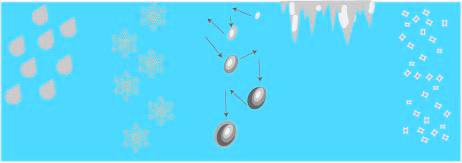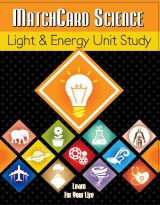Precipitation Experiments & Lesson
 This lesson comes from the MatchCard Science Weather Unit Study. Information on the types of precipitation is provided on the MatchCards. Download the MatchCards free by following this link.
This lesson comes from the MatchCard Science Weather Unit Study. Information on the types of precipitation is provided on the MatchCards. Download the MatchCards free by following this link.
How to Make a Rain Gauge
- Use a wide mouthed jar or pitcher.
- Place it on a flat surface away from trees or buildings.
- If the container is not heavy enough to withstand a breeze, place it in a larger bucket or container filled with sand.
- After the rain is over, measure the liquid with a kitchen or science measuring device.
Compare the Amount of Snow to Water
This works best with snow, though in some cases hail or sleet might also be used.- Fill a measuring cup with snow. Do not pack the snow down.
- Measure and record the amount of snow.
- Let it melt.
- Shortly after melting, measure and record the amount of water. Do not wait too long so that water may evaporate.
- Write a ratio of the amount of snow compared to the amount of water.
- What conclusions can you draw?
You might want to try the experiment with different types of snow.
Chart the Precipitation
Make a chart of the amount of precipitation that falls in your geographic area.- Before looking it up, guess how much of your precipitation is rain, snow, hail, sleet.
- Consult a map. Check the annual precipitation for your area. Were you right?
- Make a chart of the amount of the four types of precipitation.
- Compare it to three other locations on the globe.
How Clean Are Your Icicles?
- Collect several different icicles from different sources (roof, tree, car)
- Put them in different containers, and let them melt indoors.
- Put a piece of white paper towel over a glass. It will act as a filter.
- Slowly pour the melted icicle through the paper towel into the glass below.
- Examine the paper towel for sediment.
- Repeat with the other containers of melted icicles. Use a different paper towel for each.
Where does the Water Go
Ever wonder what happens to the rain that hits you on the head?You may want to trace the route of water as it flows from your yard to the ocean.
A Rain Cloud In My Jar
You will use a clear glass mixing bowl or large glass jar to make your own rain.- Put hot water in your mixing bowl. It can be steaming hot, but be careful not to burn yourself. It does not need to boil.
- Put a plate on top of the bowl. It will be a lid.
- Add some ice cubes to the plate.
- Watch it rain!
MatchCard Science
How To Use MatchCards

Download the FREE MatchCard Science Instructor's Guide and see how MatchCards can make building their science knowledge base fun.
Light and Energy Unit Study

Download the entire Light and Energy unit study.
12 Science Unit Studies

Chemistry is only one of twelve complete unit studies for kids in 3rd to 8th grade.
Comprehensive objectives, hands-on projects, suggested science fair experiments, and the fun game-like MatchCards keep them interested in learning science. See all twelve MatchCard Science Unit Studies.
About Our Site
Hands-On Learning













